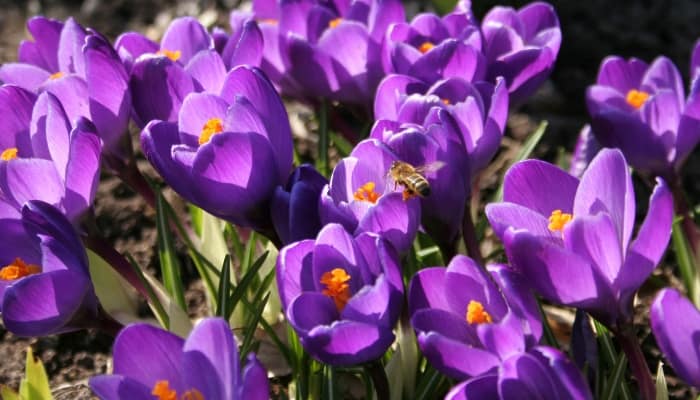If you reside in Zone 5, crocuses may be a beneficial addition to your garden. They are available in various types and are capable of thriving in challenging growing conditions, such as cold weather.
In Zone 5, crocuses bloom in the spring. In other zones, they might bloom as late as the summer or even late fall. The weather is the main factor in determining the time of flowering for these plants. If you live in a warm microclimate, your crocuses might bloom earlier than the rest of Zone 5.
Besides the weather, other factors such as the location, soil, and sunlight can also determine the flowering time of the crocuses. Read more to find out how to grow and care for these flowering plants.
Growing Crocuses in Zone 5
Zone 5 is at the bottom end of moderate Growing Zones. It leans toward cold and has a relatively short growing season compared to the other moderate Zones, but since crocuses are cold-hardy, you can successfully grow them in zone 5.
Crocus Growing Zone
Crocuses can handle cold weather and even frost. What they cannot handle are the hot sun and high temperatures.
Typically, you can grow crocus in Zones 3 to 8 without having many issues. However, the bloom time of the plant will vary depending on which Zone you live in.
When To Plant Crocuses in Zone 5
Crocuses needs a warm-cold-warm cycle in order to bloom. The best time to plant them in Zone 5 is early in the fall.
Time it so that the plants will have enough time to develop their root balls before the first frost. The cold weather in the winter will keep the crocuses dormant until the spring.
What Month Do Crocus Bloom?
In Zone 5, crocuses usually bloom in March, but the weather and your particular microclimate can cause blooms to appear earlier or later.
How Long Do Crocus Blooms Last?
When crocuses bloom, you can expect the flowers to last for about 3 weeks before fading away.
How Deep Do You Plant Crocus Bulbs?
Crocus bulbs need to be 3-4 inches deep in the soil. This is important for the roots to develop properly. The flat part of the bulb should be at the bottom.
How To Plant Crocus Bulbs
Although crocus bulbs are no different from other bulbs that you grow in your garden, both the planting timing and growing conditions can impact the plant’s growth and flowering.
The following instructions walk you through this process step by step.
- The best time to plant the bulbs is in the fall between September and November. The earlier you plant them, the better; 6 to 8 weeks before the first frost is ideal.
- Choose a location that gets 6 to 8 hours of direct sunlight. It should be facing the west or south.
- Amend the soil before planting, and make sure it has the right texture that drains well. Crocuses don’t like to sit in wet soil for too long.
- Add organic material, and mix it well into the soil to give the bulbs a good start before the soil freezes.
- Dig a hole 3 to 4 inches deep in the soil, and place the bulbs in the hole with the flat sides facing downward. The tapering ends should point up.
- Cover the bulbs with soil, and tap the area lightly to push out air pockets.
- Plant in groups of 10 crocuses together, and space the bulbs 2 to 3 inches apart.
- Water the soil to help it settle.
Growing Crocus in Pots Outdoors
Crocuses are a good ground cover in many landscapes, but you can also plant crocuses in pots. The advantage of this is that it allows you to move the plant around to change your landscape.
A portable crocus is easy to manage and doesn’t get lost in the lawn or a large garden. Here’s how to grow crocuses in pots outdoors.
- Every crocus bulb should have its own pot. This makes it easier for you to care for the plant and avoids issues like overcrowded plants.
- Choose a medium pot about 12 inches in diameter and the same in depth.
- Fill it with a general-purpose potting mix (this one with moisture control is excellent) 2 inches from the edge. You can make your own mix by adding garden soil to perlite at a ratio of 2:1.
- Dig a hole in the middle of the pot about 4 inches deep, and plant the bulb with the flat bottom resting on the soil.
- Backfill the hole with soil and tamp it firmly. The bulb must be covered with soil to sprout.
- Water the soil to get it thoroughly moist but not wet.
- Do the same with the rest of the bulbs.
- Keep the pots in a sunny location away from strong winds. Water them regularly until the bulbs sprout.
What To Do With Crocus After Flowering
After flowering, the crocus, like many other plants that produce bulbs, will focus its resources on developing healthy bulbs. The bulbs act as energy storage units that feed the plants the next spring.
Remove the faded flowers, but keep the leaves on since they generate energy from sunlight. Water the plants when the soil dries out, and feed them with a mild fertilizer.
Zone 5 Bulbs – Top Choices
Besides crocuses, you can also plant other bulbs in Zone 5. These include the following:
Allium
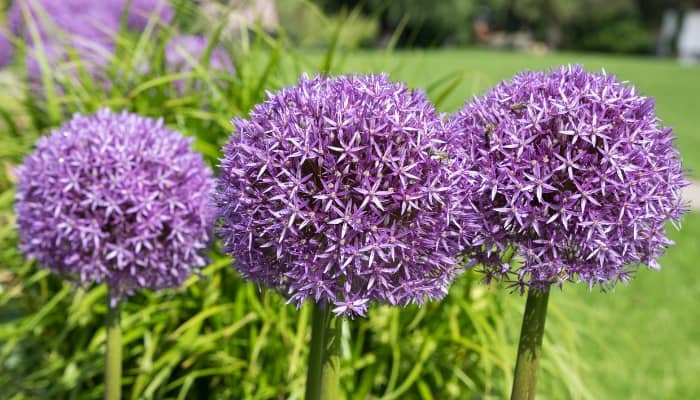
A regal plant with a dome-shaped flower. The flowers come in different colors including pink, purple, and cream.
The plant is resistant to wildlife, especially rabbits and deer, and the flowers attract pollinators. Allium flowers look great in floral arrangements.
Colchicum
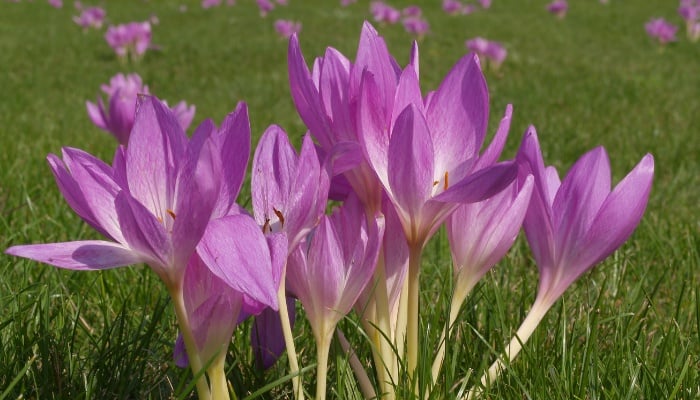
A late bloomer, Colchicum flowers in the fall after all other flowers in the garden have faded. The double flowers have different colors depending on the variety and species.
The most notable colors include pink, white, purple, orange, and yellow.
Fritillaria
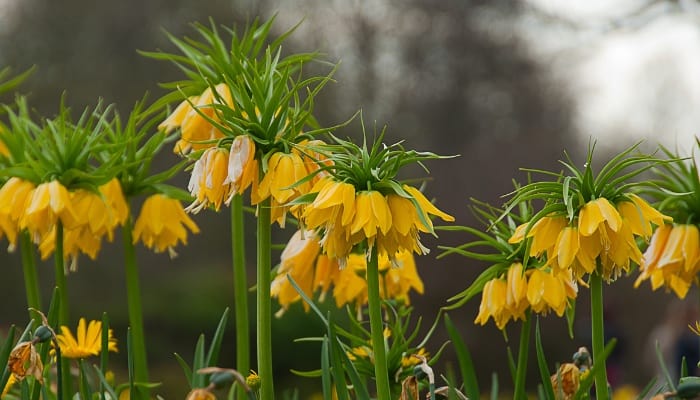
A member of the lily family, this bulb dazzles not just with the vibrant colors of the flowers but also with the shape of the flower itself.
The flowers grow on top of a long and sturdy stalk and face down. The bell-shaped flowers are usually fiery orange, red, yellow, or white.
Iris
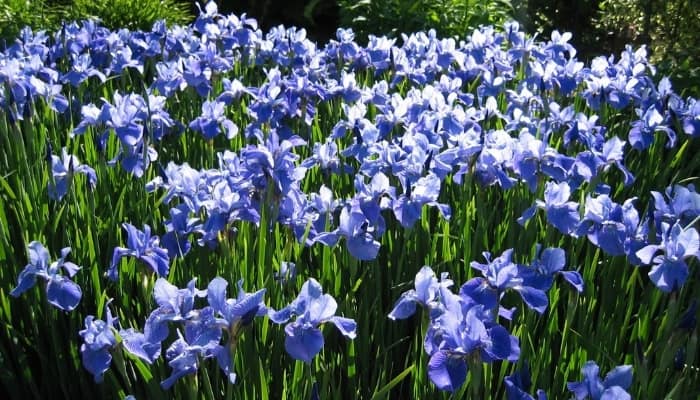
Irises come in well over 300 species. They are one of the showiest bulbs you can grow in your garden.
Long stems rise out of the bulb, and each carries a large flower in the shape of a fan. The outer leaves of the flower droop and the fuzzy hairs in the middle give them a unique look.
Purple irises are the most popular variety, and they are easy to grow.
Hyacinth
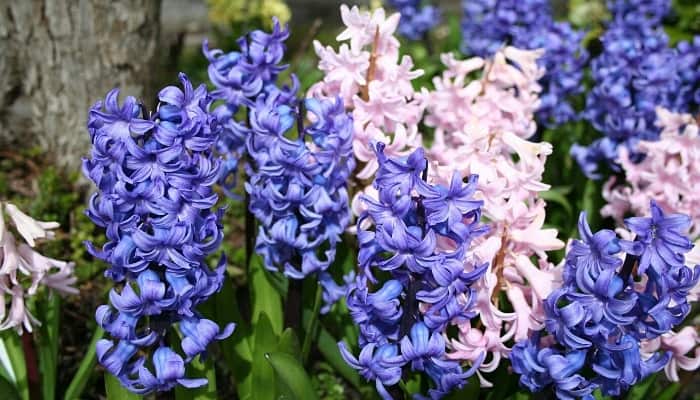
This perennial bulb is native to the eastern Mediterranean. Each bulb produces three spikes with a few flowers on top of each spike.
The flowers come in different shades of blue including dark blue, violet, and purple. At maturity, the plant grows to about 6 or 8 inches high.
Related Questions:
When Do Crocuses Bloom in Zone 6?
Crocuses bloom in Zone 6 in early spring around the same time they bloom in Zone 5, but since zone 6 is warmer, the plants might flower earlier in the spring than in Zone 5.
Chilling hours are crucial for their flowering, so if the previous winter was mild, the plants might not bloom as abundantly.
How Many Flowers Do You Get From Crocus Bulbs?
Each crocus bulb produces one flower. This is why you need to plant a group of 10 bulbs together to make the flower bed stand out.
Final Thoughts
In Zone 5, you need to plant crocus bulbs early in the fall between 6 and 8 weeks before the first frost.
This gives the plants time to develop roots before the cold winter months. In the spring, the crocuses will bloom and stay in bloom for 3 weeks.

